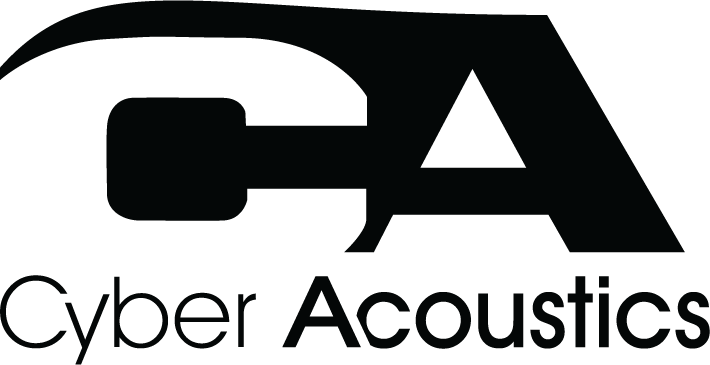Prop 65 FAQs
What does the Prop 65 warning mean on my Cyber Acoustics product?
“This product contains a chemical known to the State of California to cause cancer and birth defects or other reproductive harm.”
Not what you expect to see when you purchase a new product. We don’t blame you. However, if you live in the state of California, and look around, you will find this warning on items in your home, businesses, restaurants, hotels, theme parks and more.
This warning is the result of a law passed in California in 1986, referred to as the California Safe Drinking Water and Toxic Enforcement Act of 1986, or more generally referred to as “Proposition 65,” or “Prop 65” for short.
What is Proposition 65?
Prop 65 is broad law that applies to any company operating in California, selling products in California, or manufacturing products that may be sold in or brought into California. It mandates that the Governor of California, through the California Office of Environmental Health Hazard Assessment (OEHHA) maintain and publish a list of elements and chemicals that are known to cause cancer, birth defects and/or other reproductive harm. The list, which must be updated at least annually, now includes over 1,100 naturally occurring elements and man-made chemicals that can be found to affect everyday items, including radon in businesses and homes, dyes, solvents, drugs, food-additives, by-products of certain processes, pesticides, to name just a few. The purpose of Proposition 65 was to ensure that people of California are informed about exposure to every known element and chemical that could ever cause harm.
Proposition 65 also requires warnings to be placed on any product, product packaging, or literature accompanying a product that contains or may contain any of the 1100-plus chemicals that OEHHA has listed. As noted above, many of the elements listed under Proposition 65 have been routinely used in everyday consumer items and households for decades without documented harm.
A warning must be given if the listed chemical is merely present in a product unless a business demonstrates that the exposure it causes poses “no significant risk.” The “no significant risk” levels established under the law present some of the most conservative public health levels in the world. With respect to carcinogens, the “no significant risk” level is defined as the level which is calculated to result in not more than one excess case of cancer in 100,000 individuals exposed over a 70-year lifetime. In other words, if you are exposed to the chemical in question at this level every day for 70 years, theoretically, it will increase your chances of getting cancer by no more than 1 case in 100,000 individuals so exposed.
With respect to reproductive toxicants, the “no significant risk” level is defined as the level of exposure which, even if multiplied by 1,000, will not produce birth defects or other reproductive harm. In other words, the level of exposure is below the “no observable effect level,” divided by 1,000. (The “no observable effect level” is the highest dose level which has not been associated with observable reproductive harm in humans or test animals.)
Why do we include the warning?
Answering this question requires some more context. First and foremost, Cyber Acoustics always works to comply with all applicable laws, everywhere, including Prop 65. With the way Proposition 65 is structured, however, it is not possible to ascertain, with 100% scientific certainty, whether or not a particular product requires a warning for any one of the more than 1,100+ chemicals on the Proposition 65 and OEHHA lists. At the same time, the law allows any private person “in the public interest” — so-called private bounty hunters – to sue companies to enforce the law, and to keep a percentage of the penalties imposed. The law’s lack of certainty about when to warn is often exploited by these bounty hunters, who file thousands of Proposition 65 lawsuits every year. Penalties can be very high; the cost of defending a case also is very high.
As a result of the potential penalties and the current legal enforcement climate, Cyber Acoustics, as well as many other manufacturers, have elected to provide the Proposition 65 notice out of an abundance of caution in order to ensure compliance even if unnecessary. With hundreds of products and product sub-assemblies that could have variations in raw material suppliers from one production run to the next, it is not physically or financially possible for us to test and re-test to this growing list of over 1100+ elements and chemicals on the California Proposition 65 warning list. For the most up to date and complete listing, visit the official OEHHA website.
Your right to know
The warning does not mean that our products actually will cause any harm. Moreover, a Proposition 65 warning does not mean a product is in violation of any product-safety standards or requirements. In fact, the California government has clarified that “the fact that a product bears a Proposition 65 warning does not mean by itself that the product is unsafe.” The government has also explained, “You could think of Proposition 65 more as a ‘right to know’ law than a pure product safety law.” (oehha.ca.gov/prop65/background/).
We believe our products are not harmful when used as designed. We provide the warning in order to comply with this California right-to-know law.
We don’t live in California? Why is this included?
Our products are sold worldwide. It would be extremely difficult and costly to determine which products, over time, will be directly or indirectly sold or brought into California. Therefore, to ensure compliance with Proposition 65 requirements, we are to including these warnings on all of our products, regardless of distinction or sale destination.
For more information about Proposition 65, visit: www.oehha.ca.gov/prop65

